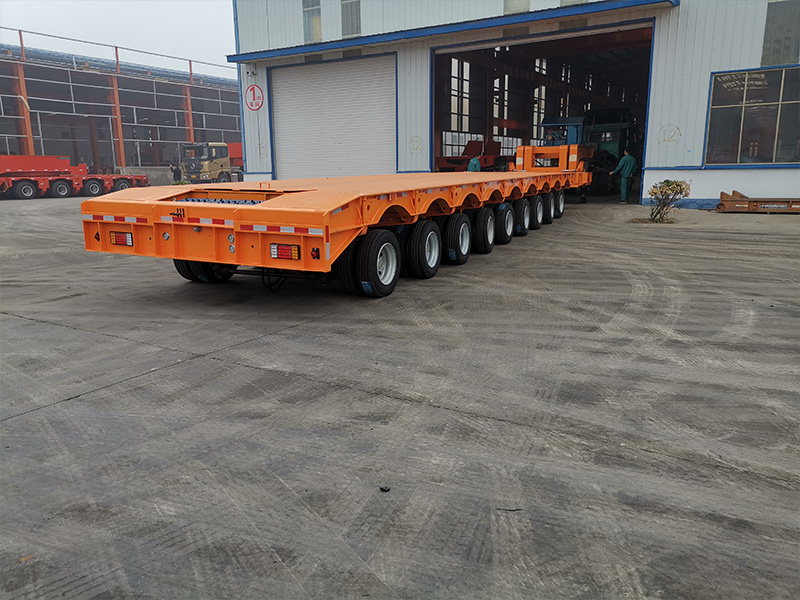When it comes to heavy-duty transportation and material handling, the choice between a side tipper and a rear tipper can significantly impact efficiency and functionality. Both types of tippers are indispensable in various industries such as construction, mining, and waste management. This article aims to provide a comprehensive comparison between side tipper and rear tipper trailer, highlighting their unique features, operational differences, and ideal applications.
Section 1: Understanding Side Tipper trailerSide tipper trailer, also known as side dump trailer, are designed with a hinge point at the rear and a dumping mechanism on the side. They are particularly useful for:
Unloading material on one side without the need to turn the truck around.
Working in tight spaces where rear dumping may not be possible.
Hauling loose materials like soil, gravel, and coal.
The design of side tipper trailer allows for a faster unloading process and is often preferred when the unloading site is adjacent to the truck's route.
Section 2: Rear Tipper trailer OverviewRear tipper trailer, commonly known as dump trailer, feature a hinge point at the center and dump material at the rear. They are characterized by:
A traditional design that is widely recognized and used across various industries.
The ability to dump material in a wide area, making them suitable for large-scale projects.
Compatibility with a variety of attachments, such as tarp systems for containing loose material.
Rear tippers are ideal for applications that require unloading material in a specific area without the need for the truck to maneuver extensively post-dumping.

Section 3: Design and MechanicsThe fundamental difference between side and rear tippers lies in their design and mechanics:
Side Tipper Design: Features a tilting body that pivots on the rear axle, allowing the material to be dumped to the side.
Rear Tipper Design: Features a tilting body that pivots at the center, with the material being unloaded at the rear.
The mechanics of each type are tailored to their specific applications, with side tippers often having a more complex hydraulic system to manage the side dumping action.
Section 4: Operational EfficiencyOperational efficiency is a critical factor when choosing between a side tipper and a rear tipper:
Side Tipper Efficiency: Offers quick unloading with minimal need for truck repositioning, which can save time and reduce fuel consumption.
Rear Tipper Efficiency: Provides a straightforward unloading process in situations where the truck can back up directly to the unloading site.
Section 5: Maneuverability and Space ConstraintsThe choice between a side tipper and a rear tipper can be influenced by the space available at the work site:
Side Tipper Maneuverability: Excelling in tight spaces where it may not be possible to maneuver the truck for rear dumping.
Rear Tipper Maneuverability: More suitable for open areas where the truck can easily back up to the unloading point.
Section 6: Applications and IndustriesDifferent industries and applications may favor one type of tipper truck over the other:
Side Tipper Applications: Commonly used in urban construction sites, mining operations, and scenarios where space is limited.
Rear Tipper Applications: Widely used in large-scale construction projects, road building, and waste management where space is less of a constraint.
Section 7: Safety ConsiderationsSafety is paramount when operating heavy machinery like tipper trucks:
Side Tipper Safety: Requires careful operation to avoid spillage outside the designated unloading area and to ensure stability during the side dumping process.
Rear Tipper Safety: Involves standard safety precautions associated with rear dumping, including securing loads and ensuring clear visibility during the unloading process.
Section 8: Maintenance and DurabilityThe maintenance requirements and durability of side and rear tippers are similar, yet they have distinct aspects:
Side Tipper Maintenance: May require more frequent checks on the hydraulic system and the side dumping mechanism.
Rear Tipper Maintenance: Typically involves regular checks on the truck's suspension and rear dumping mechanism.
Both types are built to withstand heavy use, but the specific wear patterns may vary based on the unloading method.
Section 9: Cost and ROIThe cost and return on investment (ROI) for side and rear tippers can vary:
Side Tipper Cost: May have a higher initial cost due to the complexity of the side dumping mechanism.
Rear Tipper Cost: Generally has a lower upfront cost but may require more space for effective operation.
The choice between the two should consider the operational savings and the potential increase in productivity.
Conclusion:The decision to use a side tipper or a rear tipper truck depends on various factors, including the specific requirements of the job, space constraints, safety considerations, and cost implications. Side tippers offer advantages in tight spaces and quick unloading times, while rear tippers provide a familiar and straightforward unloading process suitable for larger sites. By understanding the differences between these two types of trucks, operators can make informed choices that enhance their operational efficiency and productivity.
 Jul 11, 2024|
Jul 11, 2024| View:147
View:147






